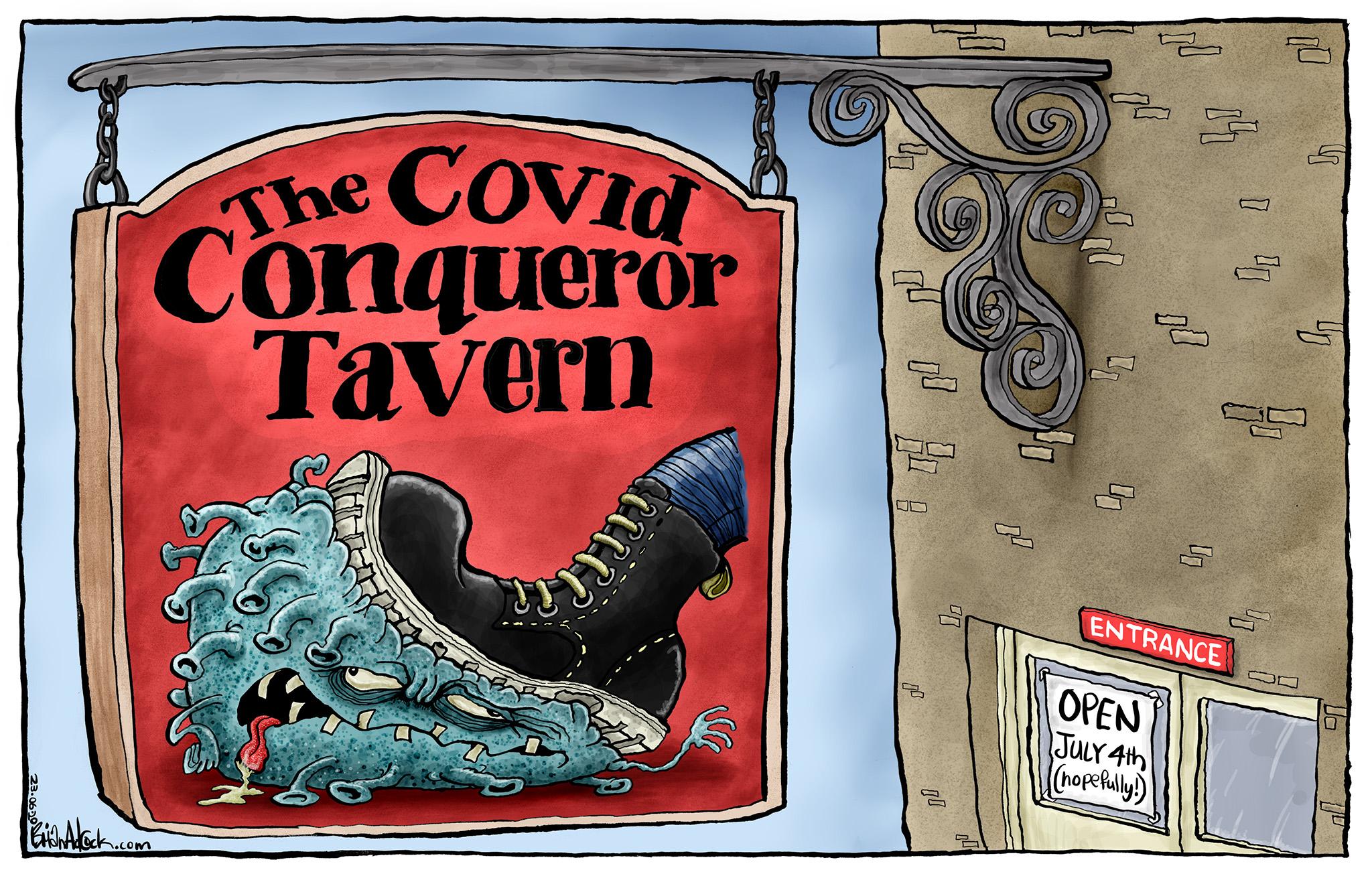Before long the “two-metre rule” that the British have become acquainted with will be chopped in half, at least in England. When the most severe of these unfamiliar rules on social distancing were being introduced the BBC jokily asked viewers to imagine the health editor Hugh Pym – 6ft 7in tall – lying on the ground in front of them to visualise the required gap. Now we must try to guess what half a Pym is to prevent breathing in aerosol particles of coronavirus. The nation will be advised in all likelihood to take extra care by wearing masks, and to wash hands as often as possible. Some cautious citizens will probably carry on with the two-metre rule and avoid socialising in any case.
With luck and some ingenuity, the one-metre rule will make more businesses economically viable, and more schools eventually able to open up safely. Even so, venues from tea rooms and pubs to the Royal Opera House or Wembley Stadium will find operating with most of their staff and other costs, but only a fraction of their revenues, extremely difficult if not impossible. Manufacturing, construction and other sectors will also find the pressures easing, especially so as schools, nurseries and childcare eventually become operational and staff can return to work. Public transport may also become a more natural option for commuters again. It is all progress, at least. The public finances and the debt overhang will be that much less the sooner the economic recovery begins in earnest.
The risks to public health, though, are real. Without an efficient test and trace regime, relaxing lockdown is extremely hazardous. The coronavirus has not been extirpated – far from it – and it can spread exponentially from comparatively small local outbreaks. Test and trace is supposed to be the main line of defence against a second wave of infections, and, from what we know about the system, it is not going to be a very effective line of defence.
Other countries, some with a far more impressive track record in control, are suffering from spikes and outbreaks. Historically, centuries of gruesome experience teaches us that a second wave of a pandemic is perfectly normal and to be expected. The likely timing of such a wave would probably mean another spike in infections in the autumn going into the winter, the colder weather perhaps encouraging the spread of the virus. With only about 5 to 10 per cent of the community having been infected (and possibly acquired antibodies) and a vaccine still uncertain, herd immunity seems a distant prospect. A year or so after arriving in Europe, the virus will still be killing people as we enter 2021.
Reassuringly, the UK’s four medical officers have approved downgrading the Covid risk level from 4 to 3.
On average – a slightly dangerous approach in this context – the chances of bumping into someone who has Covid-19 in Britain is small – about one in 1,700 – as it was in the very earliest stages of the pandemic, some months ago.
But we all know what went wrong then, when test and trace was abandoned prematurely because the number of infections overwhelmed the system and the move to full lockdown was slow. It would be doubly unforgivable if those sorts of misjudgements were to be repeated in the coming weeks.

Join our commenting forum
Join thought-provoking conversations, follow other Independent readers and see their replies
Comments